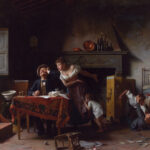Genre painting, also known as “scenes of everyday life,” has always held a particular allure. This style highlights moments from daily life: from village festivals to simple domestic interiors, from market life to agricultural fields. Despite often being relegated to a “lesser” position compared to portraiture or grand mythological and sacred themes, it possesses an unmatched narrative strength.
During the Renaissance, both the aristocracy and the Church viewed this genre with suspicion. However, with the rise of the bourgeoisie and the emergence of the merchant class in the 16th century, especially in the Netherlands, genre painting found its audience.
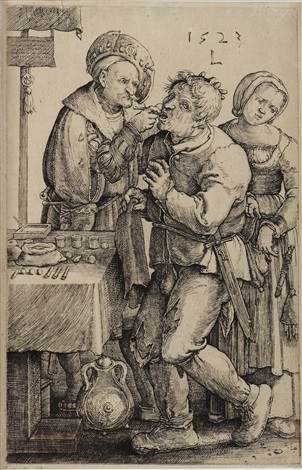
A fascinating and slightly macabre theme among these is that of the Tooth Puller. It is believed that Lucas Van Leyden was the first to address this subject in 1523, with a detailed engraving. Not long after, Johann Liss drew inspiration from Leyden, creating paintings that closely followed the original design.
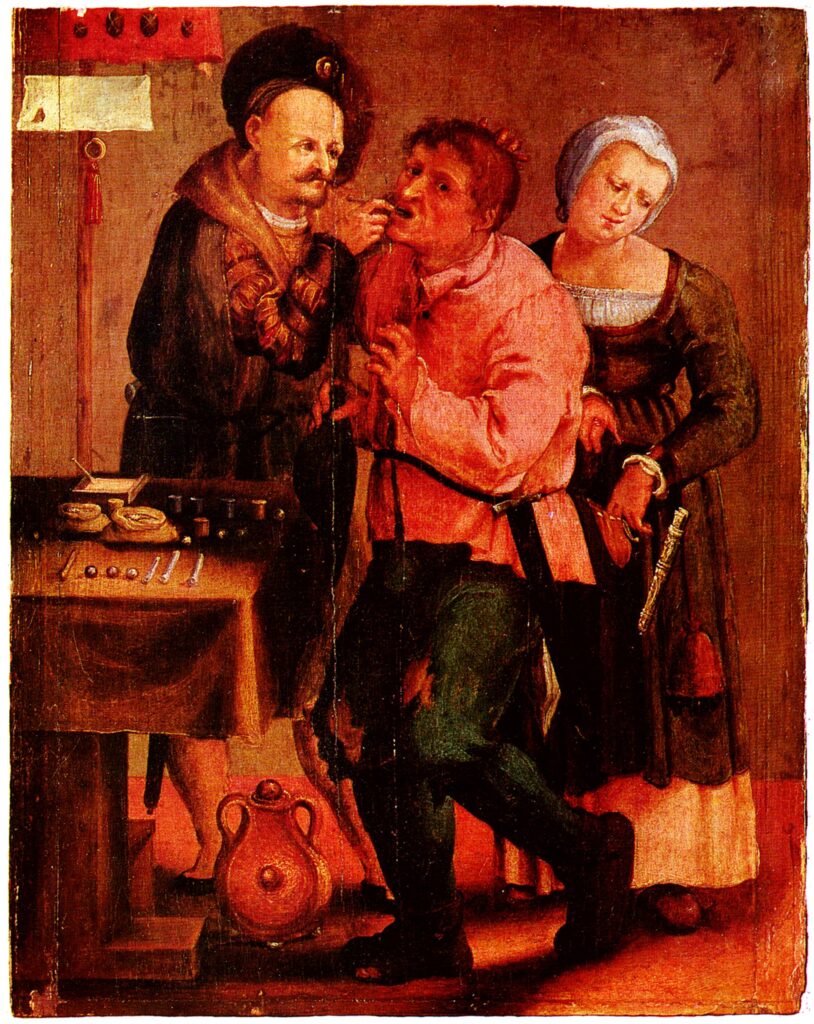
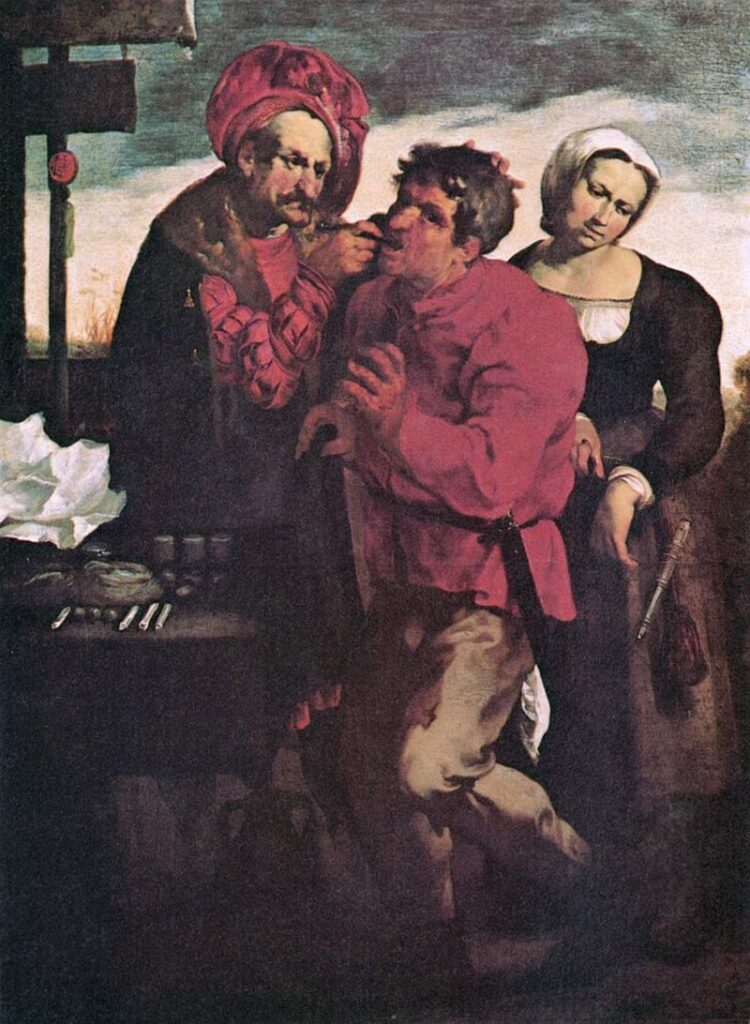
The great Caravaggio, known for his intense sacred images as well as vivid representations of everyday life in settings like taverns, left a mark with “The Tooth Puller.” This work influenced numerous Flemish artists, including Theodor Rombouts, who produced a similar version now displayed at the Prado Museum.
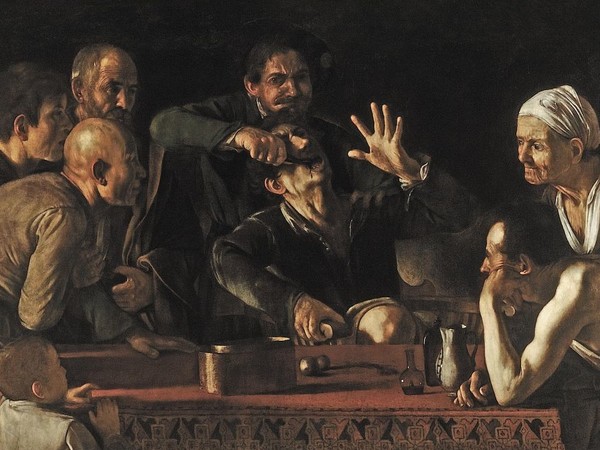
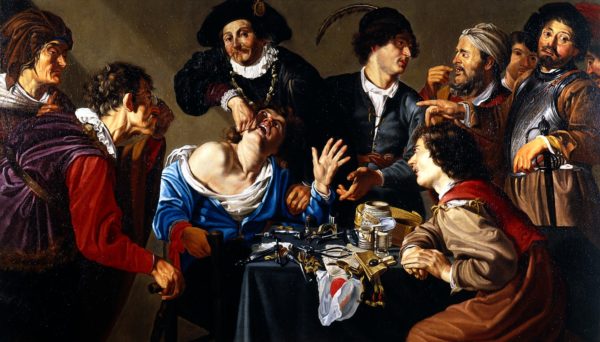
Over time, these representations have acquired different nuances. For example, the paintings of Jan Miense Molenaer and Gerrit Dou show Tooth Pullers in an almost professional context. In particular, Dou portrays an environment reminiscent of an ancient barber and surgeon’s workshop, highlighting the historical link between barbers and minor surgical procedures, such as dental extractions.
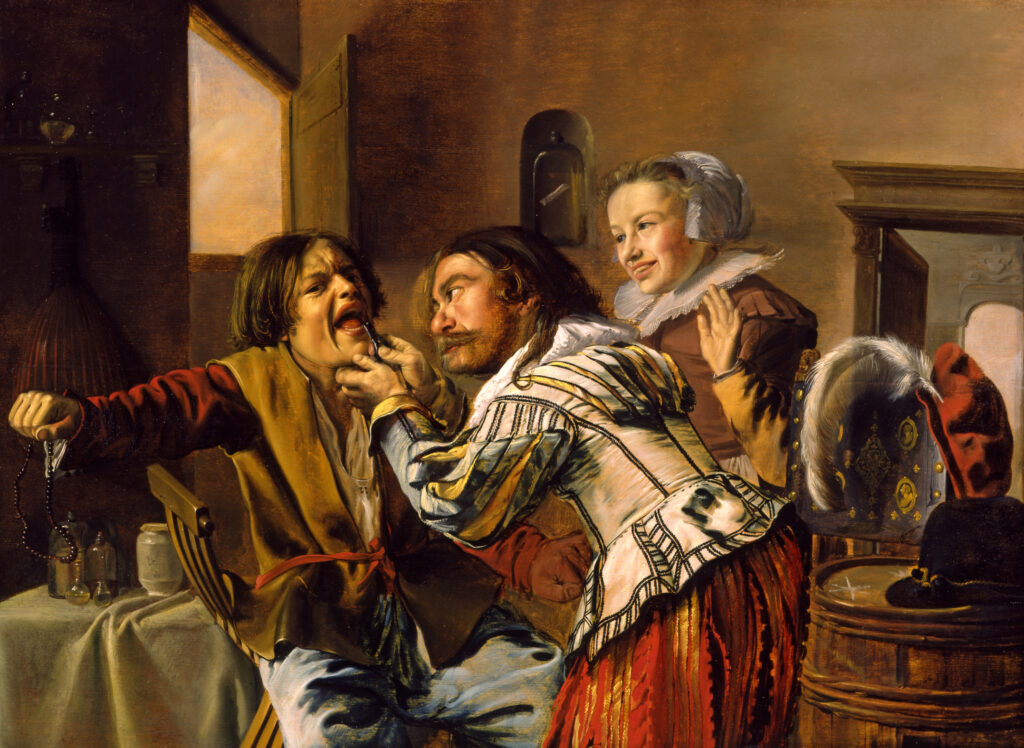
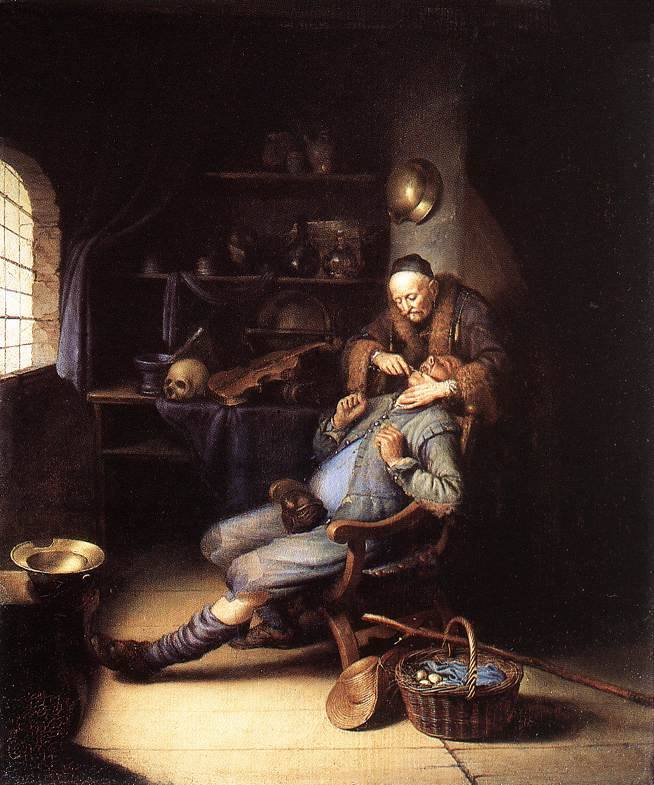
The last work I wish to mention is that of Pietro Longhi. In this painting, each character is absorbed in their own actions, creating an almost theatrical atmosphere. The presence of a monkey, masks, and a dwarf buying fruit adds a surreal touch to the work, and the pose of the tooth puller is reminiscent of the attitude of elixir sellers at fairs.
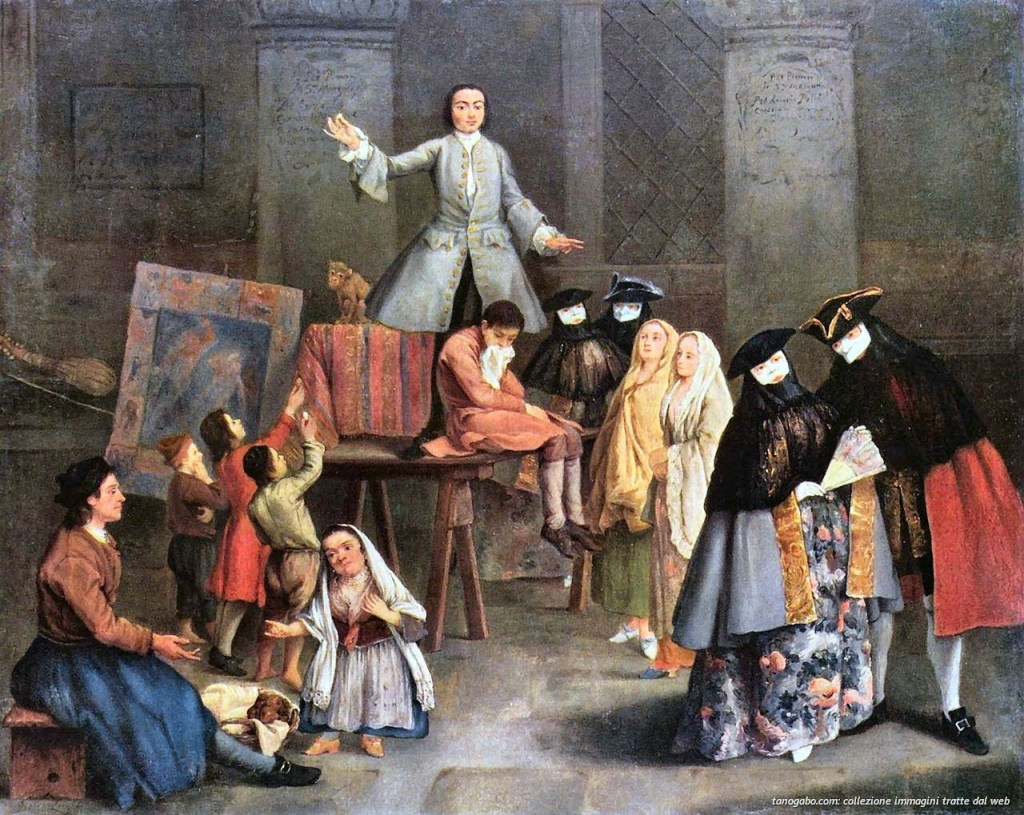
A brief historical excursion: from medieval times, barbers were entrusted with multiple activities, from tooth extractions to bloodletting. There were different categories of barbers, each with a specific skill, from hair cutting to surgery.
If we pause to consider the role of Tooth Pullers, we realize that their origins were much humbler than we might think. Indeed, the profession of the tooth puller was closely linked to that of the barber. During the Middle Ages and the Renaissance, there were no dentists as we understand them today. The art of tooth extraction was often in the hands of barbers, who in addition to cutting hair and beards, performed a range of rudimentary medical functions.
This link between the two trades was mainly due to the lack of specialized medical training and the need for low-cost professionals to perform these functions. But what did all this mean for the patient? Well, imagine sitting in the barber’s chair not just for a shave but also for a tooth extraction, often performed with rudimentary tools and without adequate anesthesia.
The perception of tooth pullers as charlatans or swindlers had its roots. Many were little more than improvisers, lacking necessary skills and relying more on practical experience than on real training. Pain, infections, and sometimes more severe complications were a reality for the patients of these “specialists.” This is why the association of tooth pullers with deception and unreliability took hold and solidified in the popular imagination, as illustrated by the saying “as deceitful as a tooth puller.”
In conclusion, the theme of Tooth Pullers is not just an artistic representation but also offers an ironic look at the society of the time, revealing human facets in a fascinating mix of realism and fiction, and highlighting the endless depth and variety of the world of art.




